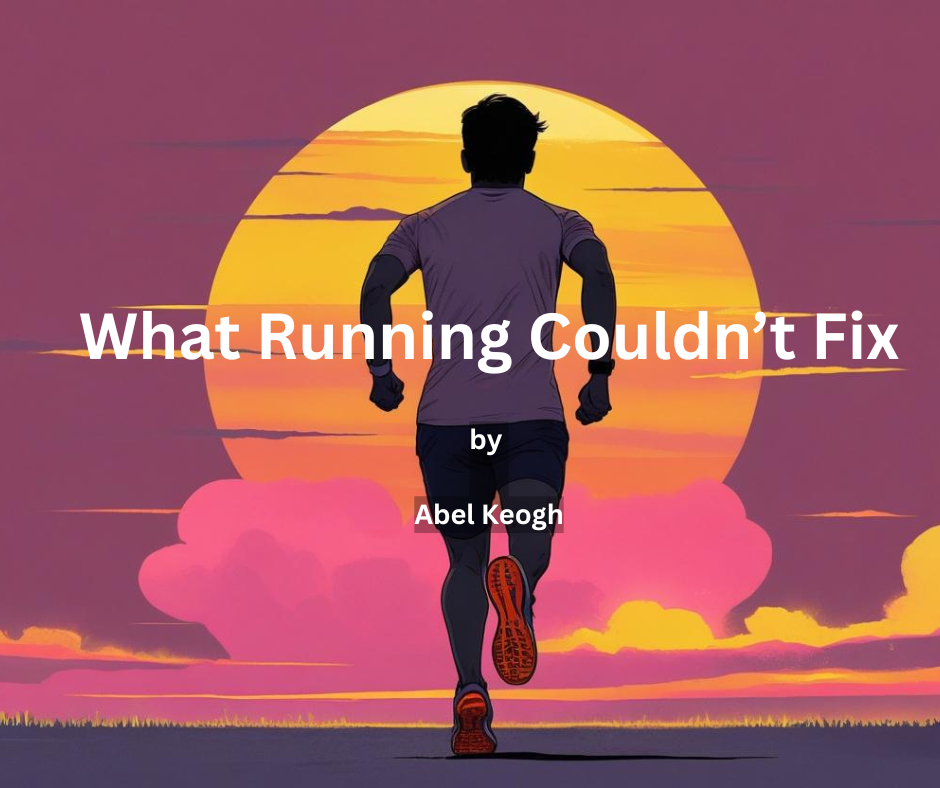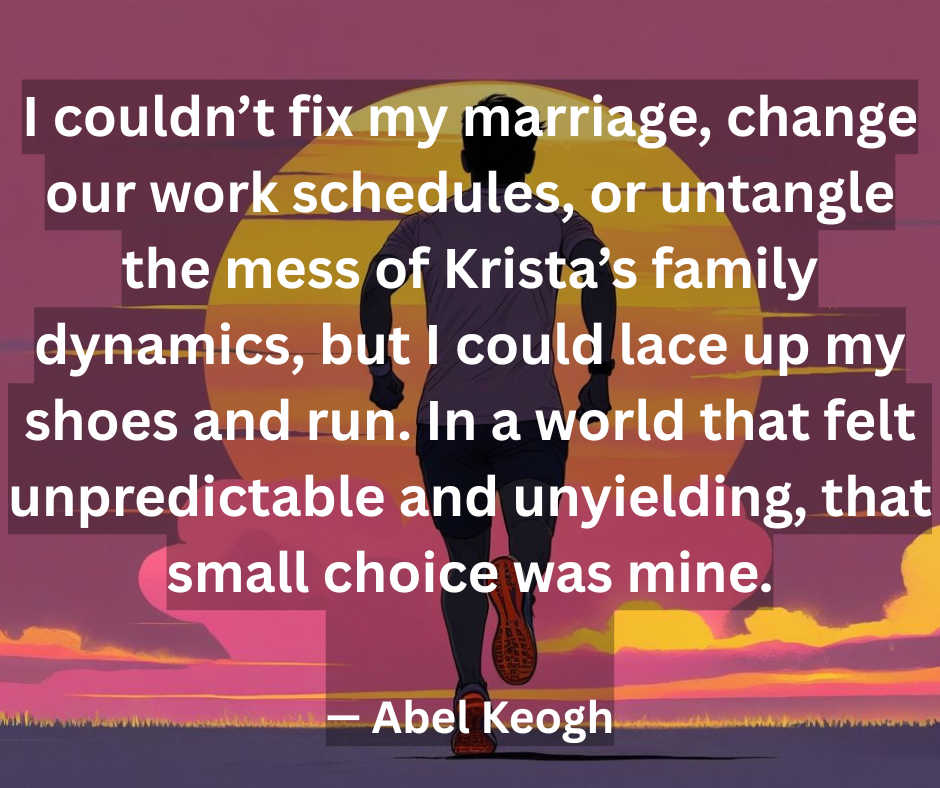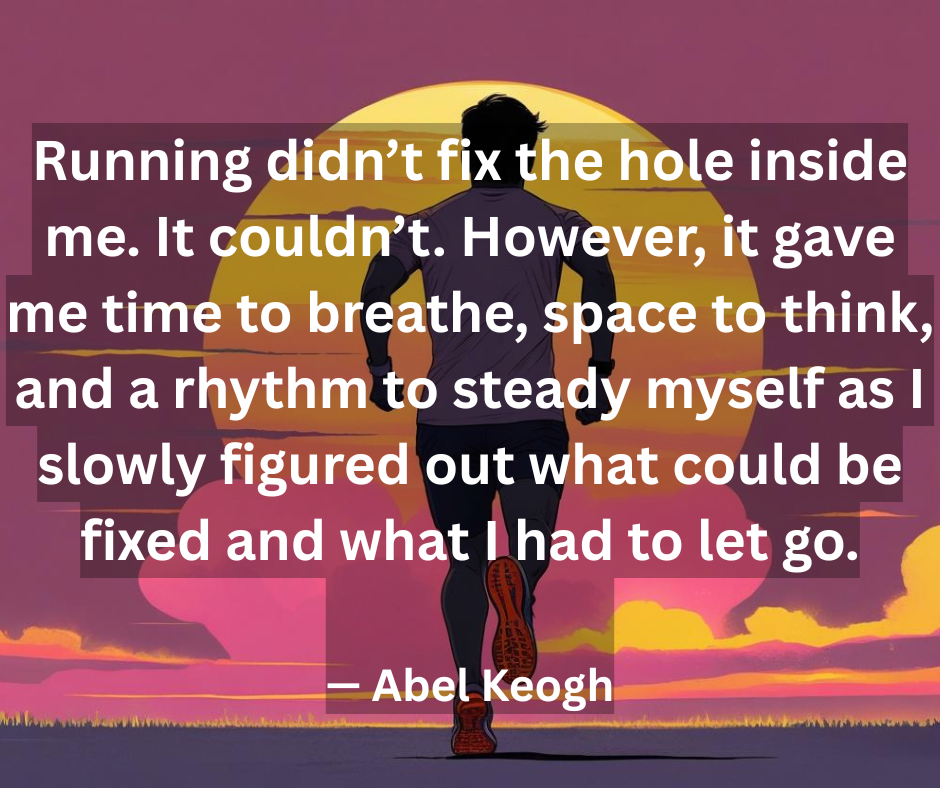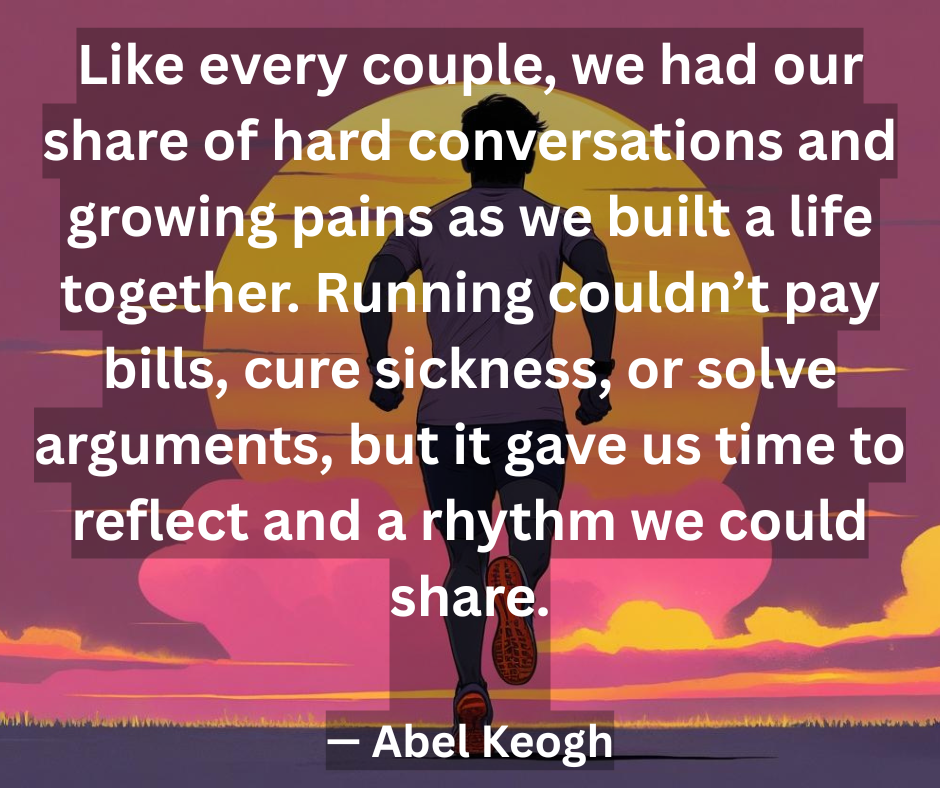I can’t remember the exact day I laced up those old running shoes, but I remember the mirror.
I had been sitting behind a desk for over a year, working my first “real” job out of college. The tech company stocked free snacks and sodas, and I’d been living off both. At six-foot-three, I carried my 235 pounds better than most, but there was no mistaking it—I had let myself go. Standing shirtless in front of the mirror that evening, I didn’t recognize the man staring back. He looked worn out and soft, weighed down by more than just extra pounds. I needed to fix something and wasn’t sure where to start. So, I reached for an old pair of running shoes.
They were beat-up, dusty, and shoved in the back corner of my closet. I laced them up and stepped out into a hot July evening. From the street, I had a clear view of the sun setting behind Antelope Island in the middle of the Great Salt Lake. I hadn’t regularly exercised in over a year, so I set a modest goal: run one mile. I remember almost nothing from that run except a neighbor mowing his lawn who paused long enough to give me a look—a mix of pity and curiosity—as I shuffled by.
I finished the run without stopping, but my side ached and my legs throbbed from the effort. Still, the pain felt earned. It was something real and solid in a life that was slowly unraveling. My wife Krista and I had been married for almost two years, and our relationship was starting to fray. I worked during the day, and she worked evenings, and between the long commutes and schedule differences, we barely saw each other during the week. On weekends, we were often pulled into the orbit of her family. Krista had a complicated, somewhat co-dependent relationship with her parents, and the time we might have spent reconnecting as a couple was usually devoted to dealing with their problems. It felt like our marriage, instead of being a shared life, was becoming a support system for everyone else.
I ran again the following evening. It was another slow, heavy mile, minus the neighbor. The next night, I did yet another mile. The mileage wasn't much, but those lumbering runs gave me traction when it felt like other parts of my life were slipping.
Little by little, my daily mileage increased. Before long, I found myself at the high school track each evening, circling its familiar loop alongside others who showed up in the fading light. We didn’t speak, but there was comfort in the shared rhythm—the steady beat of footsteps, the rise and fall of breath, the silent agreement to keep going. We were strangers, but we each carried something heavy, hoping that forward motion might ease a burden we couldn’t fully leave behind.
I couldn’t fix my marriage, change our work schedules, or untangle the mess of Krista’s family dynamics, but I could lace up my shoes and run. In a world that felt unpredictable and unyielding, that small choice was mine. I reclaimed part of myself one step and one mile at a time. Somewhere along the way, the soda lost its appeal, and the snacks no longer offered comfort. The weight came off—50 pounds in six months—but what mattered more was the sense of control I began to regain. When everything else felt out of sync, running gave me something solid to hold on to. It became proof that progress, however small, was still possible. For the first time in years, I could point to something and say: this is working. And for a while, that was enough. After I lost the weight, running became more than exercise—it became a ritual, a rhythm, and a refuge. Most of all, it gave me a way to face the things I couldn’t control and clarity to start repairing what I could.
When Krista and our nine-day-old infant daughter died the following year, there was no manual for how to survive that kind of loss. But each morning, the road was there. The pavement didn’t offer advice or try to cheer me up. It simply let me run. Mile after mile, I tried to sort through the grief, confusion, and the unbearable silence of a home that had once been full. Running didn’t fix the hole inside me. It couldn’t. However, it gave me time to breathe, space to think, and a rhythm to steady myself as I slowly figured out what could be fixed and what I had to let go.
When I started dating again, running became a bridge. I met a woman named Julianna. She was strong, focused, fresh off a recent marathon win, and already training for the next. Eventually, we grew close enough that she let me into that part of her world. Every morning at 5:00 a.m., I drove to her apartment for training runs. We didn’t talk much, but those quiet miles gave us something solid: time together without distractions and shared effort side by side. These morning runs didn’t fix my past, but they helped me build something in the present. Step by step, breath by breath, running helped us figure out how to move forward and navigate the unique issues of dating a recent widower. Running didn’t solve my problems or resolve Julianna’s concerns, but it showed my dedication and became something we could build a relationship on.
We married soon after. The years that followed were joyful, but chaotic. We had three kids in under three years, which meant diapers, sleepless nights, and a house that was never quiet. There were stretches when the money ran short, and jobs felt more draining than stable—seasons marked by layoffs, difficult bosses, and days we counted down until quitting time. Illness visited too, uninvited and unplanned, reminding us how fragile stability can be. And, like every couple, we had our share of hard conversations and growing pains as we built a life together. Running couldn’t pay bills, cure sickness, or solve arguments, but it gave us time to reflect and a rhythm we could share.
At first, we pushed one jogging stroller, then two, the second being a double-wide. As the kids got older, they biked alongside us. To this day, they remember being bundled in blankets on frosty mornings or pedaling through puddles to see who could make the biggest splash.
As our family grew from three to seven children, our challenges differed from the ones I’d known before. When Krista and I worked opposite shifts and her family’s needs often swallowed up our weekends, life felt scattered and disconnected. Now, the noise of babies crying and toddlers squabbling still drained me, but it came from something we were building together—a life that, for all its chaos, finally felt like it belonged to me too. Alongside the exhaustion came moments of laughter, wonder, and small joys like sticky hugs, unexpected questions, and giggles echoing through the house, making it easier to bear. Running didn’t quiet the craziness, but it gave us an outlet and a ritual. Each run was a reminder, however brief, that we were still moving forward together.
Four of our seven kids eventually became runners themselves. We’ve paced them through 5Ks and training runs, watched them struggle, sweat, and find their stride on cross-country and track teams. Not all stuck with it—one chose swimming, another volleyball, and the youngest is still figuring it out. I’ve learned I can’t shape their paths, but I can run beside them, help them push through a hard mile, and show them what it looks like to keep going. They’ve each learned, in their own way, what running taught me years ago: life doesn’t always go as planned, but there’s value in the effort and in finishing what you can.
These days, I mostly run alone—thirty or forty quiet minutes each morning to think, pray, ponder, or simply let the silence stretch. Sometimes I run with Julianna or one of the kids, especially when someone needs space to talk or just be close. Occasionally, a neighbor joins me, and we fall into an easy rhythm, the way runners do, when effort is shared. I’m not chasing times or distance. I run to stay centered—to begin the day with something steady, something that reminds me I’m still here, breathing, and capable of taking the next step. My body doesn’t recover like it used to. The miles leave their mark, but I still lace up—not because I expect running to fix anything, but because it’s already carried me through more than I ever thought I could bear.
Running didn’t save me. It didn’t erase the sorrow of losing Krista or solve the mess that came after. However, it gave me something solid beneath my feet when everything else felt uncertain. It helped me grow into the kind of man and father Julianna and my children needed. It gave me rhythm when life felt scattered, breath when the weight was heavy, and forward motion when standing still would’ve been easier. Along the way, it gave Julianna and me a way to build something new in the life we were creating together.
This month marks twenty-five years of running—tens of thousands of miles, countless mornings, and one quiet truth I keep learning: you don’t have to fix everything or have all the answers. Sometimes it’s enough to keep moving—step by step, breath by breath—toward the life that’s still unfolding in front of you.
###



